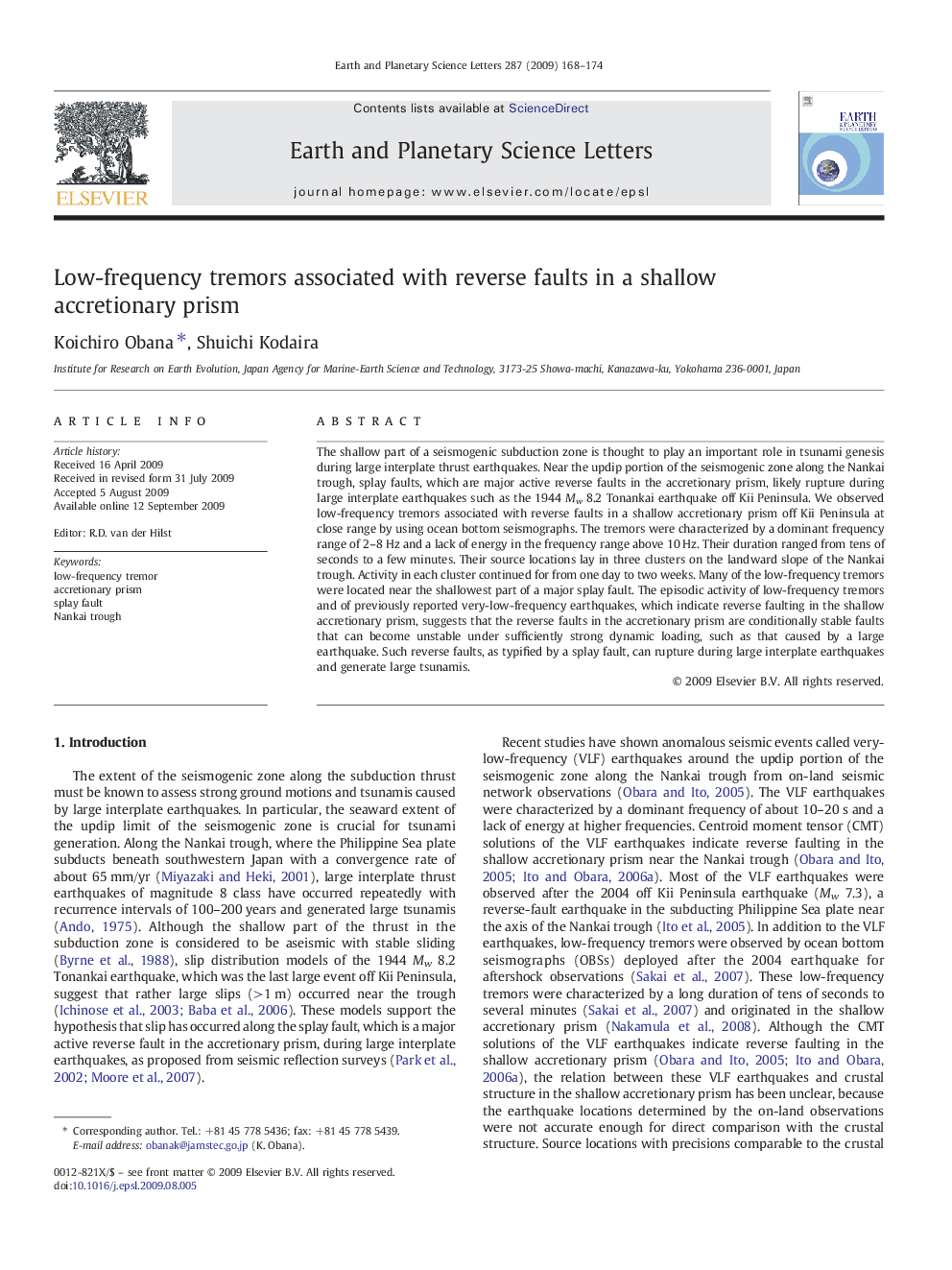| Article ID | Journal | Published Year | Pages | File Type |
|---|---|---|---|---|
| 4678815 | Earth and Planetary Science Letters | 2009 | 7 Pages |
The shallow part of a seismogenic subduction zone is thought to play an important role in tsunami genesis during large interplate thrust earthquakes. Near the updip portion of the seismogenic zone along the Nankai trough, splay faults, which are major active reverse faults in the accretionary prism, likely rupture during large interplate earthquakes such as the 1944 Mw 8.2 Tonankai earthquake off Kii Peninsula. We observed low-frequency tremors associated with reverse faults in a shallow accretionary prism off Kii Peninsula at close range by using ocean bottom seismographs. The tremors were characterized by a dominant frequency range of 2–8 Hz and a lack of energy in the frequency range above 10 Hz. Their duration ranged from tens of seconds to a few minutes. Their source locations lay in three clusters on the landward slope of the Nankai trough. Activity in each cluster continued for from one day to two weeks. Many of the low-frequency tremors were located near the shallowest part of a major splay fault. The episodic activity of low-frequency tremors and of previously reported very-low-frequency earthquakes, which indicate reverse faulting in the shallow accretionary prism, suggests that the reverse faults in the accretionary prism are conditionally stable faults that can become unstable under sufficiently strong dynamic loading, such as that caused by a large earthquake. Such reverse faults, as typified by a splay fault, can rupture during large interplate earthquakes and generate large tsunamis.
